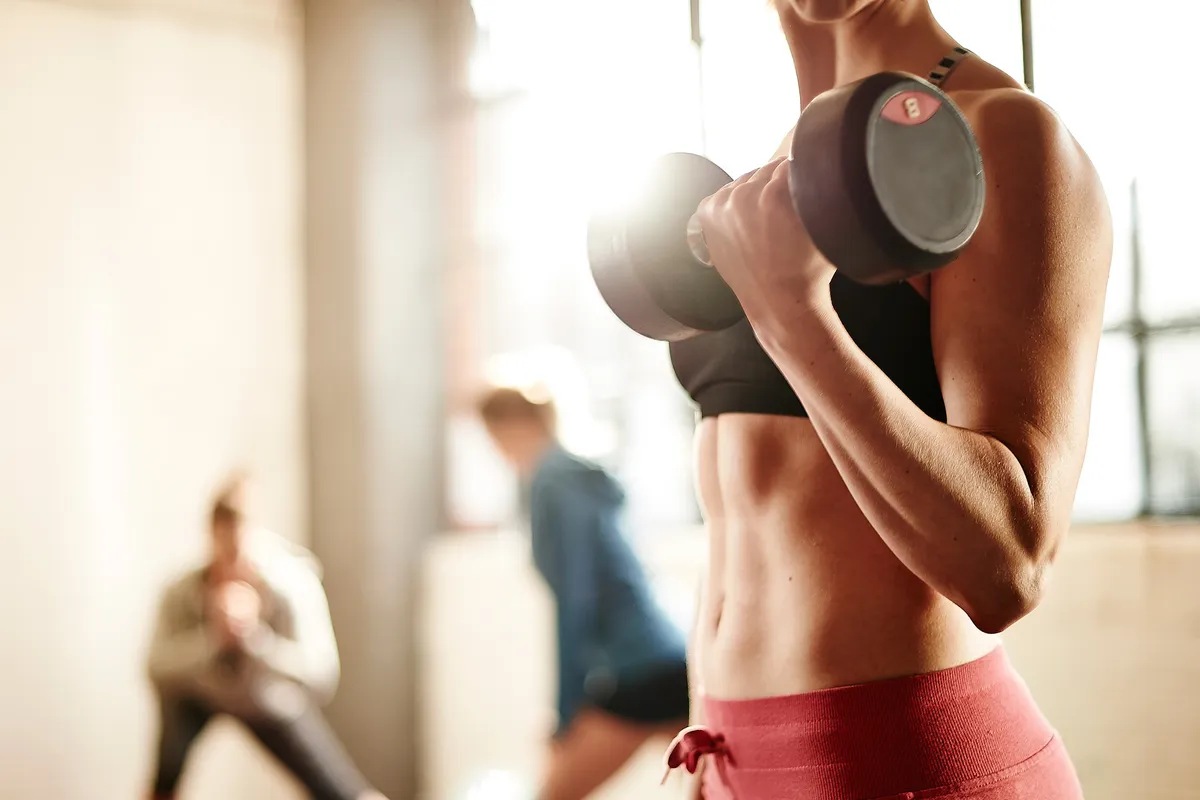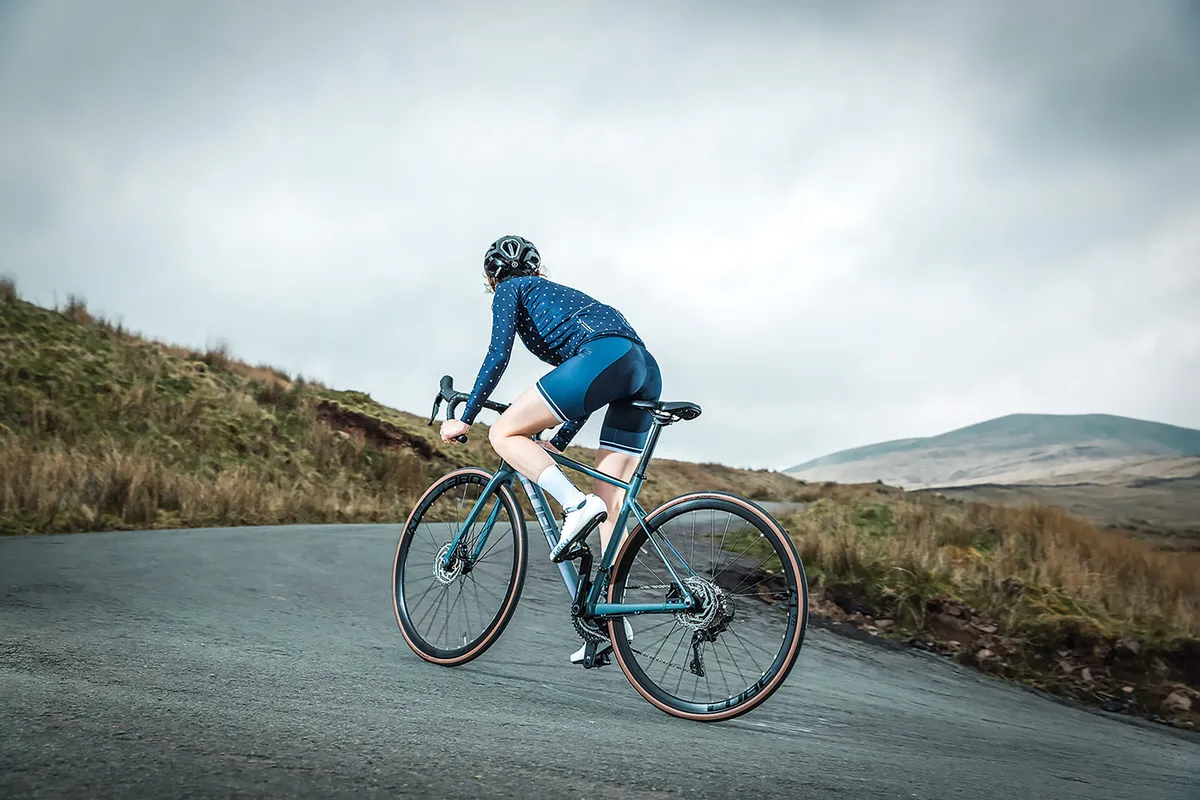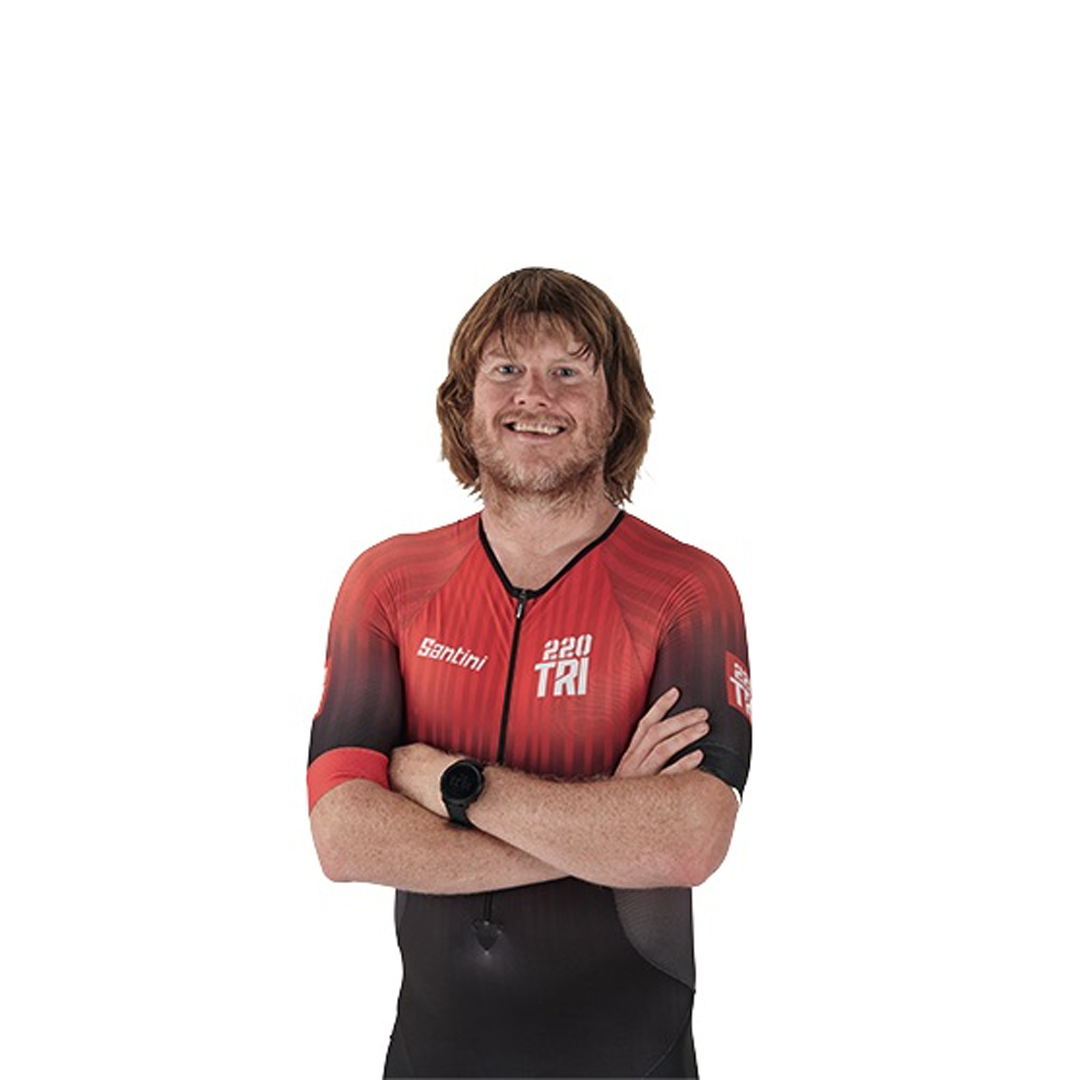The primary guidelines around training are focused on men. But what's good for male athletes won't always suit women, due to differing physiologies and nutritional needs between the sexes, to name two reasons.
“The number of case studies where women have trained as men and then burnt out is extreme,” so says Dr Georgie Bruinvels, exercise physiologist and co-creator of the FitrWoman app, which enables women to track their menstrual cycle and offers nutritional suggestions tailored to their changing hormone levels.
“Huge importance needs to be placed on training as a woman as opposed to training as a man,” says Dr Bruinvels.
Keep reading to find out how female athletes can adjust their training to boost their fitness, with insight from Dr Bruinvels and British Cycling.
Strengthen your muscles

As Dr Bruinvels explains, muscle activation pathways differ between sexes, and a key example of this is that women find it harder to use their gluteal muscles and hamstrings.
“For example, when cycling out of the saddle, women are more likely to rely on their quads than men, who’ll more naturally use their glutes and hamstrings to drive motion,” says Dr Bruinvels.
This is due to anatomical differences, chiefly the Q-angle, which is created between the quadriceps tendon and patella tendon.
Because women usually have wider hips than men, their Q-angle tends to be larger, which increases risk of knee pain and anterior cruciate ligament (ACL) injury due to lower stability.
In fact, women are 3.5 times more likely to sustain a non-contact anterior cruciate ligament (ACL) injury than men, according to US research in 2013.
Yet this risk can be reduced with attention to hamstring and gluteal muscles, which helps to stabilise the knee.
As well as doing strength training exercises, such as squats and lunges that target the gluteus maximus and give downward power on the bike, aim to strengthen the smaller muscles – the gluteus medius and gluteus minimus, which stabilise the hips and thigh bones.
Exercises such as stiff-leg deadlifts, barbell squats and lateral side steps using a resistance band apply here.
Strengthening these muscles can also improve performance.
“More than 50 per cent of the time, when female cyclists are asked what slows them down, they say their quads are getting heavy and tired,” says Dr Bruinvels. It’s also key for women to warm these muscles up prior to cycling.
“Don’t just jump on the bike and start cycling hard. Do some activation, for example walking around, doing lunges and getting the body firing correctly, as well as skips, jumps and hops, before getting on the bike.”
Plan training around your menstrual cycle

The menstrual cycle can affect a woman’s injury risk, too. Research published in 2012 showed that women are at greater risk of a torn ACL in the second week of their cycle, which are the days leading up to and including ovulation.
This is because oestrogen increases significantly at this time, causing greater ligament laxity. Ligament laxity is significant in the lower back prior to ovulation too.
Katie Flatters, British Cycling sports physiotherapist, says: “Anecdotally, female riders tend to get lumbar (back) and pelvis symptoms around [menstruation], which can also impact their training and arguably their performance.”
Dr Bruinvels advises female cyclists to increase stabilisation by activating their gluteals and core to protect from over-rotating, which can cause knock-on pain.
Dr Samuel Impey, lead nutritionist at British Cycling, says the menstrual cycle is also an essential consideration for planning training.
“There are certain types of sessions that are better suited to specific phases. For example, muscle glycogen use is lower in the ‘luteal’ phase [after ovulation], when oestrogen and progesterone are high, but progesterone predominates. So doing VO2 max efforts and intervals well above threshold could be hampered by not being able to make full use of the glycolytic capacity of the muscle, which is essential to fuel these kinds of sessions.”
He advises it might be more appropriate to focus on lower-intensity sessions during the luteal phase and higher-intensity during the mid-to-late follicular phase (the time between the first day of a period and ovulation).
Females can recover better from high-intensity, heavy weights during the follicular phase. This is because oestrogen is low at this time, and this hormone inhibits the body’s use of carbs, making it harder to work intensely when it’s high.
Nutritional needs

Women also have differing nutritional needs from men.
Two key factors focused on at British Cycling are menstrual function and dietary iron intake.
Iron is an important part of cycling nutrition because it produces red blood cells and transports oxygen around the body.
Lauren Delaney, performance nutritionist for the English Institute of Sport, says fuelling and recovery requirements are advised based on training needs as well as body weight.
“As most females will be of a lower body weight than males, this means that targets for carb intake are usually lower.”
Delaney cites a heavy training day for an average endurance rider as an example.
“We’d advise to consume 6-8g carbohydrate per kg body weight. A 50kg female rider might aim for 300-400g carbs per day, whereas a 70kg male athlete might aim for 420-560g.
"In terms of fuelling targets on the bike, these would be similar for males and females of all weight sizes at 30-90g of carbs per hour.”
As a guide, 60g of carbs equates to a regular banana.
Avoid fasted riding

Dr Impey adds that female athletes shouldn’t restrict energy intake severely or for extended periods of time because this can cause significant health issues and reduced performance.
“This is important for female cyclists when the volume of training increases. Doing long rides of three hours and over challenges the energy availability of the body, and it’s key for female cyclists to fuel these rides with appropriate levels of carbs, as well as eating a balanced diet around training.”
Female riders aren’t advised to ride fasted, because it increases stress on the body and can lead to slower recovery and poor bone health. This is even more key for postmenopausal women.
“Don’t exercise fasted, as this will break down bone, and ensure you refuel quickly after cycling,” says Dr Bruinvels.
“This will stop the breaking down of other tissues when the body is out of fuel. This is important for all, but particularly when bones are already at risk.”
A 2018 study revealed competitive cyclists could be at risk of sub-optimal bone health because cycling is non weight-bearing and doesn’t mechanically stimulate osteogenesis, or bone formation.
Spend time running, walking or weightlifting

Women are at greater risk of osteoporosis as they age, and for post-menopausal women who rely on cycling as their main form of exercise, the risks could be increased.
“Cycling doesn’t load the body like running or walking,” says Dr Bruinvels.
“So build in some running or walking and lifting weights to build bone density. There’s no better way to keep the body strong as you get older.”
Swimming is another good way to start cross-training.

